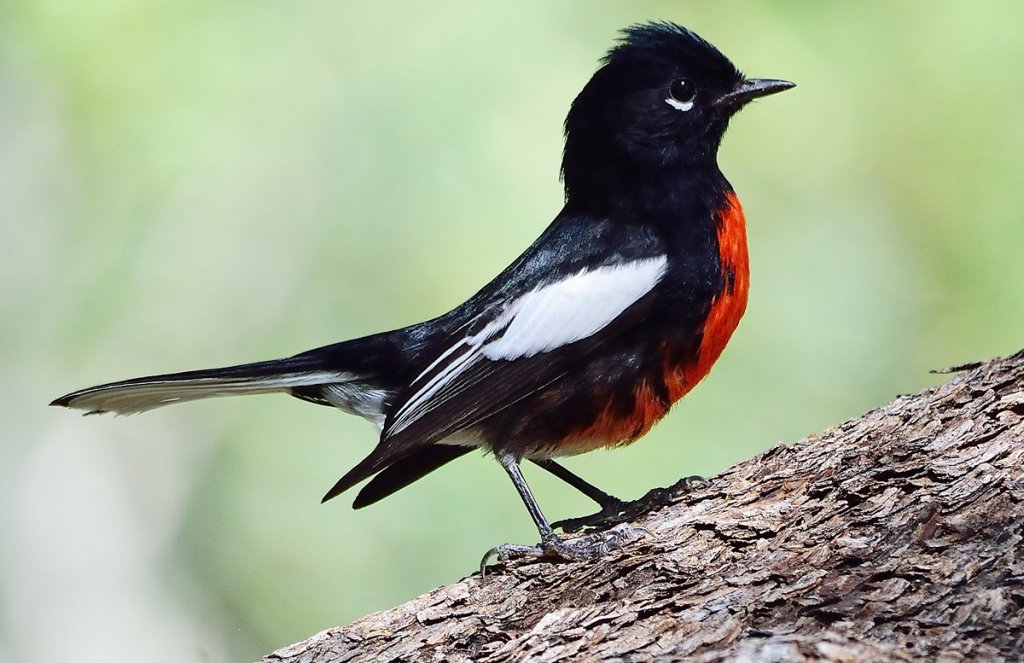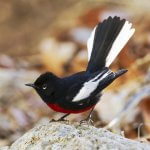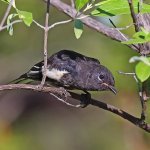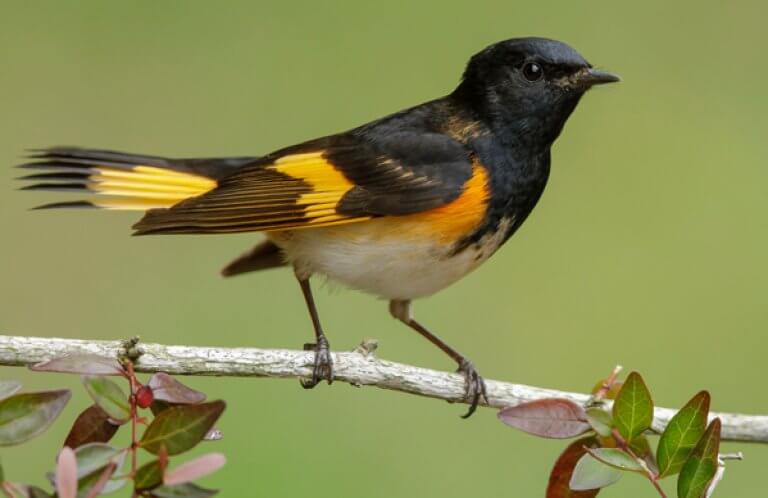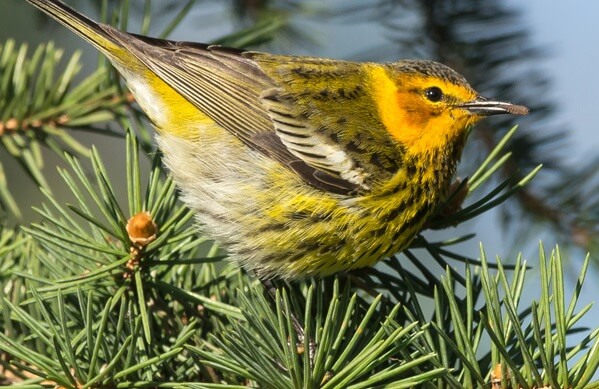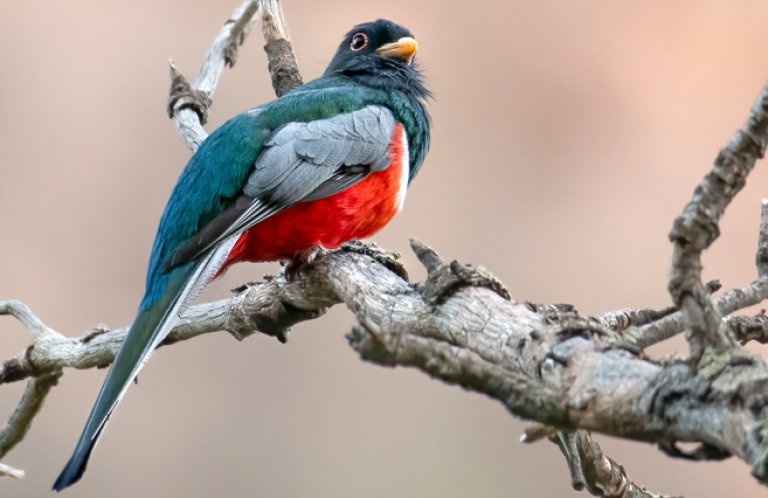About the Painted Redstart
Despite its common name, the Painted Redstart is not closely related to the familiar American Redstart, which shares the genus Setophaga with many other North American warblers including the Hooded, Cerulean, Cape May, and Kirtland's Warblers. In fact, some world bird authorities call this southwestern bird the Painted Whitestart, a reference to its relation to other species found well to the south. (This is also a fitting moniker because, although this bird has a red belly, it flashes a lot of white.) The Painted Redstart is the only U.S.-breeding member of the genus Myioborus — meaning "fly glutton" in Greek. Unlike the American Redstart, both the female and male have equally resplendent coloration.
Meals on the Move
A very active denizen of mountain forests deep in the Southwest, the Painted Redstart often flashes its wings and splays its tail feathers while foraging. This behavior often draws the attention of admiring birders, but its real function is likely to startle and flush invertebrate prey.
Songs and Sounds
The Painted Redstart is easily located by its distinctive non-warbler-like call — a loud, harsh yet sweet "CHEEoo."
This species' song is a sweet series of notes with two or three distinct phrases that run together. Mated pairs have been observed singing in duet.
Listen here:
Call:
Song:
Breeding and Feeding
Seeking Out Nooks and Crannies
During nesting season, male Painted Redstarts sing to establish territory. Females arrive a few days later, and pair bonds quickly form. Pairs prospect for potential nest sites within their territory, but the female makes the final selection — a sheltered spot on the ground under a bunch of grass or a boulder, among the roots of shrubs or small trees, or on a canyon wall — and signals her approval by beginning to bring nest materials to the spot. She alone builds the nest, a somewhat messy-looking cup made of grasses, pine needles, and leaves, lined with finer grasses and often some animal hair.
The female Painted Redstart lays three or four, sometimes five, speckled eggs, then incubates the clutch about two weeks. Both parents feed the hatchlings, which leave the nest after about two weeks. Fledged young then roam around with their parents for up to a month before heading off on their own.

The Painted Redstart is a versatile bird, foraging in several ways. As mentioned above, it will often flash wings and tail while moving through branches, or also moving along trunks, gleaning hidden and startled insects it finds. Sometimes it rocks its body side to side for added effect. It also hovers to capture prey (including insects trapped in spider webs), and swoops to catch insects at or near the water's surface, or from near lights. Some meals are also procured on the ground. Prey includes various flies, moths, leafhoppers, cicadas, and caterpillars. This bird also has a "sweet tooth," visiting hummingbird feeders and sometimes sap oozing from trees.
Region and Range
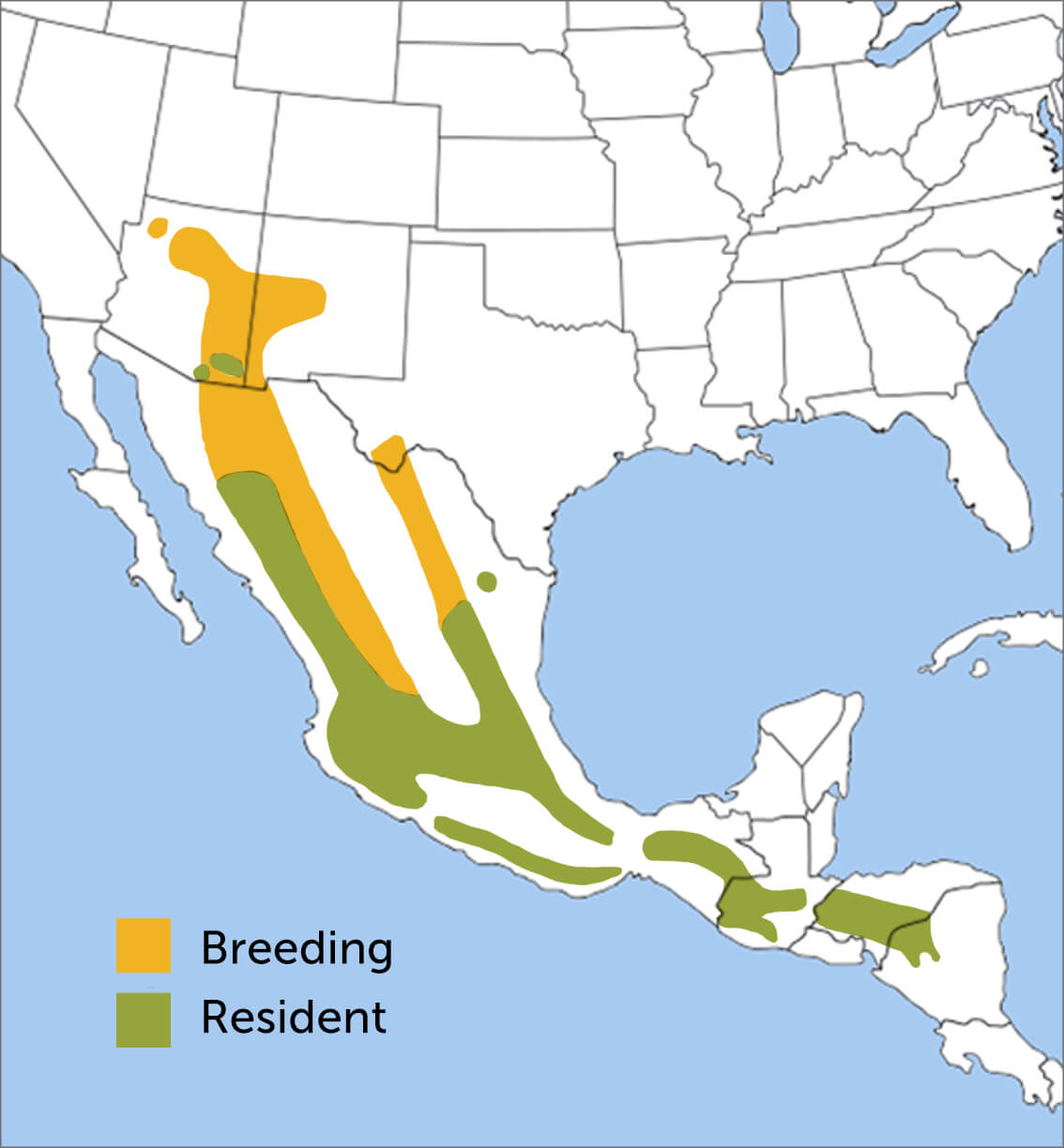
Like the Red-faced Warbler and Elegant Trogon, the Painted Redstart is mainly a bird of Mexico and northern Central America (south to northwestern Nicaragua) that extends its breeding range north into the U.S. in mountainous zones in parts of Arizona, New Mexico, and a few parts of West Texas. Migrants also pop up from time to time in southern Utah, southern California, and other areas. In southern Arizona, a few birds usually overwinter each year.
In much of the species' Mexico range and all of its Central American range, this bird is resident, joined in winter by migrants from the north. Throughout its range, the Painted Redstart is found in pine-oak and oak forests in mountainous areas. In Central America, this species may also occur locally in or at edges of cloud forest.
Conservation
Retreat From the Heat?

Help support ABC's conservation mission!
Climate models predict that the Painted Redstart may lose most if not all of its U.S. breeding range if climate change continues in coming decades. In recent years, the redstart's habitat in Arizona and New Mexico has faced extended drought and expansive wildfires. In addition, this species faces habitat loss in some parts of its range. Also, pairs breeding at popular recreation sites can be disturbed by close human presence along the streams and canyons where these birds nest.
Get Involved
Policies enacted by the U.S. Congress and federal agencies, such as the U.S. Fish and Wildlife Service, have a huge impact on migratory birds. You can help shape these rules for the better by telling lawmakers to prioritize birds, bird habitat, and bird-friendly measures. To get started, visit ABC's Action Center.
Living a bird-friendly life can have an immediate impact on migratory birds in the United States. Doing so can be as easy as adding native plants to your garden, avoiding pesticides, and keeping cats indoors. To learn more, visit our Bird-Friendly Life page.
American Bird Conservancy and our Migratory Bird Joint Venture partners have improved conservation management on more than 8.5 million acres of U.S. bird habitat — an area larger than the state of Maryland — over the last ten years. That's not all: With the help of international partners, we've established a network of more than 100 areas of priority bird habitat across the Americas, helping to ensure that birds' needs are met during all stages of their lifecycles. These are monumental undertakings, requiring the support of many, and you can help by making a gift today.





































